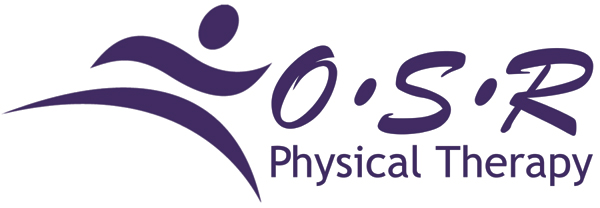Here is a review of some of the key exercises presented at the Just For Kix dance camp. When and how to properly apply them was covered in the live sessions, so please use caution in your exercise selection. This blog post is intended for review of techniques only. Some of the exercises are from the student session, and some are from the coaches' session.
Monday, July 21, 2014
Just for Kix 2014
Saturday, May 3, 2014
Cathedral Dance Festival
Kicking off dance week at the Cathedral Dance Festival with a session on strength & conditioning to improve kicks/battements and leaps! Key take home points identified by participants were the importance of muscle coordination exercises, exercises to strengthen turnout muscles, and ideas on how to balance each side of the hip & core!
 |
| Physical Therapists Meaghan Cox & Meredith Butulis at the Cathedral Dance Festival |
Saturday, January 18, 2014
Bunions?
Here are some great tips on how to keep your feet working optimally, as well as work with and prevent bunions often associated with dance.
Here is one tip for point dancers not present in this article: Put a dab of alcohol on a cotton ball. Press the cotton ball into the spot where your bunion typically hits the point shoe. This will soften that spot so it doesn't cause as much discomfort. Be careful with where the alcohol hits the shoe, as it needs to be isolated to just this spot!
This article was written by Meredith Butulis, DPT, who practices at our Eden Prairie location.
Saturday, January 11, 2014
Dance Medicine?
What is the benefit of having dance medicine and allied health providers for dancers? Watch this short video clip to hear some thoughts!
Saturday, December 21, 2013
Dancers Improve Your Performance Right Now
You are probably used to coaches, teachers, and choreographers asking for 100% or more,
over, and over, and over again. Over the holidays, there is a good chance that
you might get a few days or even a week or two off. So, what can you do right
now to improve your own performance and get an edge on the competition?
The answer is a word that dancers often don’t like to hear:
REST.
Friday, November 29, 2013
Dancer ankle sprains: A serious consideration
Why is even a minor ankle sprain taken so seriously in dance, yet other athletes tape them up an play on them?
The most commonly sprained ligament is called the Anterior Talofibular Ligament (ATFL). It can be injured at a specific moment in time, or the injury can be from repetitive overstretching of the foot into a pointy position (or performance of releve with weight slightly to the outside of the foot).
During releve, the ATFL becomes almost perpendicular to the ground, creating an overstretch situation. If the ligament is already injured, this will likely contribute to making the injury more and more chronic. Even with elastic tape to improve proprioception, there is no evidence that this will decrease the long term complications associated with pushing through the injury to continue dancing.
Even with proper care and rest from sport for 4-6 weeks, one study shows that 40% of athletic patients have pain and dysfunction for 6 months after proper rehabilitation (Gerber, et al,). However, if not properly treated, over 40% of ankle sprains lead to chronic pain and injury even beyond this time (Bennett and Safran).
You can read more about ankle sprains and their management in the Current Commentary from the American College of Sports Medicine.
This article was written by Meredith Butulis, DPT, who works out of our Eden Prairie Office.
References:
Bennett WF. Lateral ankle sprains. Part II: acute and chronic treatment. Orthop Rev. 1994;23:504–10.
Gerber, JP, et al (1998). Persistent disability associated with ankle sprains. Foot & Ankle International. 19(10): 653-60.
Safran MR, Benedetti RS, Bartolozzi AR 3d, Mandelbaum BR. Lateral ankle sprains: a comprehensive review. Part 1: etiology, pathoanatomy, histopathogenesis, and diagnosis. Med Sci Sports Exerc. 199931(7 suppl):S429–37.
The most commonly sprained ligament is called the Anterior Talofibular Ligament (ATFL). It can be injured at a specific moment in time, or the injury can be from repetitive overstretching of the foot into a pointy position (or performance of releve with weight slightly to the outside of the foot).
During releve, the ATFL becomes almost perpendicular to the ground, creating an overstretch situation. If the ligament is already injured, this will likely contribute to making the injury more and more chronic. Even with elastic tape to improve proprioception, there is no evidence that this will decrease the long term complications associated with pushing through the injury to continue dancing.
Even with proper care and rest from sport for 4-6 weeks, one study shows that 40% of athletic patients have pain and dysfunction for 6 months after proper rehabilitation (Gerber, et al,). However, if not properly treated, over 40% of ankle sprains lead to chronic pain and injury even beyond this time (Bennett and Safran).
You can read more about ankle sprains and their management in the Current Commentary from the American College of Sports Medicine.
This article was written by Meredith Butulis, DPT, who works out of our Eden Prairie Office.
References:
Bennett WF. Lateral ankle sprains. Part II: acute and chronic treatment. Orthop Rev. 1994;23:504–10.
Gerber, JP, et al (1998). Persistent disability associated with ankle sprains. Foot & Ankle International. 19(10): 653-60.
Safran MR, Benedetti RS, Bartolozzi AR 3d, Mandelbaum BR. Lateral ankle sprains: a comprehensive review. Part 1: etiology, pathoanatomy, histopathogenesis, and diagnosis. Med Sci Sports Exerc. 199931(7 suppl):S429–37.
Subscribe to:
Posts (Atom)



